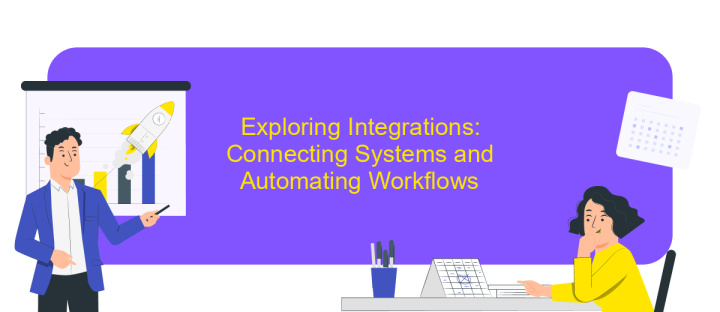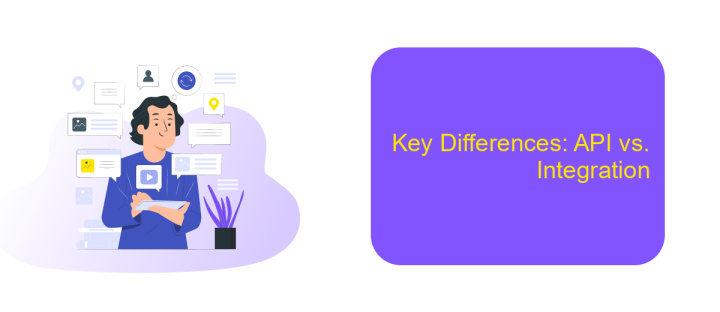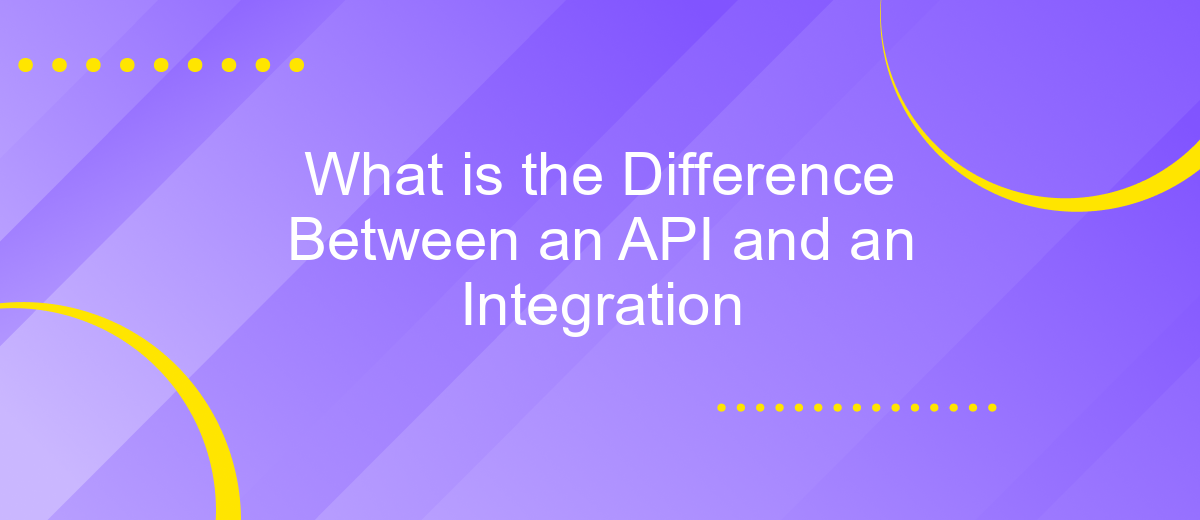What is the Difference Between an API and an Integration
In the rapidly evolving world of technology, understanding the nuances between APIs and integrations is crucial for businesses and developers alike. While both serve to connect different software systems, they do so in distinct ways. An API, or Application Programming Interface, provides a set of rules and protocols for building software applications, whereas an integration focuses on seamlessly linking disparate systems to work together efficiently.
Introduction: Defining APIs and Integrations
In the digital age, understanding the nuances between APIs (Application Programming Interfaces) and integrations is crucial for businesses and developers alike. APIs serve as the building blocks of software development, providing a set of protocols and tools for creating applications. They enable different software entities to communicate with each other, allowing for the seamless exchange of data and functionality.
- APIs: Act as intermediaries that allow different software applications to interact.
- Integrations: Involve the process of linking together different systems and software to function as a coordinated whole.
While both APIs and integrations aim to enhance connectivity and functionality, they operate at different levels and serve distinct purposes. APIs focus on enabling communication between individual software components, whereas integrations emphasize the holistic connection of entire systems. Understanding these differences is essential for effectively leveraging technology to meet business objectives and streamline operations.
Understanding APIs: How They Work and Their Benefits

APIs, or Application Programming Interfaces, serve as bridges between different software applications, enabling them to communicate and share data seamlessly. They work by defining a set of rules and protocols that allow one application to access the features or data of another. This is achieved through a series of requests and responses, where one application sends a request to the API, and the API returns the desired data or functionality. APIs are essential in modern software development as they allow developers to integrate third-party services, enhance functionalities, and improve user experiences without building everything from scratch.
The benefits of using APIs are manifold. They increase efficiency by allowing applications to leverage existing services and functionalities, thus reducing development time and costs. APIs also promote scalability, enabling applications to grow and adapt by integrating new features easily. Furthermore, they enhance flexibility, allowing businesses to choose the best tools and services for their needs. Services like ApiX-Drive facilitate API integrations, simplifying the process of connecting various applications and automating workflows, thereby empowering businesses to focus on their core activities while ensuring seamless data exchange and functionality enhancement.
Exploring Integrations: Connecting Systems and Automating Workflows

Integrations play a crucial role in today's digital landscape by enabling disparate systems to work together seamlessly. They allow businesses to connect different software applications, thereby enhancing data flow and improving operational efficiency. By bridging the gap between various platforms, integrations help in eliminating data silos and ensure that information is accessible across all departments. This connectivity is essential for businesses aiming to streamline processes and enhance collaboration.
- Data Synchronization: Integrations enable real-time data updates across systems, ensuring consistency and accuracy.
- Process Automation: They automate repetitive tasks, reducing manual effort and minimizing errors.
- Enhanced Collaboration: By connecting systems, integrations foster better communication and collaboration among teams.
- Scalability: Integrations allow businesses to easily scale operations by adding new applications and tools as needed.
- Improved Customer Experience: With integrated systems, businesses can provide a more cohesive and responsive service to their customers.
Overall, integrations are vital for businesses seeking to optimize their workflows and gain a competitive edge. By connecting systems, they not only enhance operational efficiency but also enable companies to respond quickly to market changes. As technology continues to evolve, the importance of robust integrations will only grow, making them a key component in the digital transformation journey.
Key Differences: API vs. Integration

APIs (Application Programming Interfaces) and integrations are both crucial for connecting systems and applications, but they serve different purposes. An API is a set of rules and protocols that allows different software applications to communicate with each other. It acts as a bridge, enabling data exchange and functionality sharing between disparate systems. APIs are typically used by developers to build applications that can interact with other services or platforms.
Integrations, on the other hand, are solutions designed to connect two or more systems, allowing them to work together seamlessly. They often involve using APIs but focus on the process of linking systems to automate workflows and improve efficiency. While APIs provide the tools for connectivity, integrations are the actual implementation of those tools to achieve specific business objectives.
- APIs are interfaces for programming; integrations are solutions for connectivity.
- APIs provide data and functionality; integrations use APIs to automate processes.
- APIs require development skills; integrations often use pre-built tools.
- APIs are technology-focused; integrations are business-focused.
In summary, while APIs and integrations both facilitate connectivity, APIs are about enabling communication between applications, whereas integrations focus on utilizing these communications to streamline and enhance business operations. Understanding these differences is essential for leveraging both effectively in a digital strategy.
- Automate the work of an online store or landing
- Empower through integration
- Don't spend money on programmers and integrators
- Save time by automating routine tasks
Choosing the Right Approach: API or Integration?
When deciding between an API and an integration, it's crucial to evaluate your specific needs and technical capabilities. APIs offer flexibility and control, allowing developers to create custom solutions tailored to unique business requirements. They are ideal for situations where you need to build complex systems or require real-time data exchange. However, leveraging APIs often demands a higher level of technical expertise and resources to implement and maintain.
In contrast, integrations, especially those facilitated by platforms like ApiX-Drive, provide a more user-friendly approach. They are perfect for businesses looking to connect applications quickly without extensive coding knowledge. ApiX-Drive, for instance, simplifies the process by offering pre-built connectors and an intuitive interface, enabling seamless data flow between various applications. This approach is particularly beneficial for small to medium-sized enterprises seeking efficient solutions without the overhead of managing an API. Ultimately, the choice depends on your organization's technical proficiency, budget, and the complexity of the task at hand.
FAQ
What is an API?
What is an integration?
How do APIs and integrations differ?
Can I use APIs without creating an integration?
What are the benefits of using a service like ApiX-Drive for integrations?
Apix-Drive is a simple and efficient system connector that will help you automate routine tasks and optimize business processes. You can save time and money, direct these resources to more important purposes. Test ApiX-Drive and make sure that this tool will relieve your employees and after 5 minutes of settings your business will start working faster.


